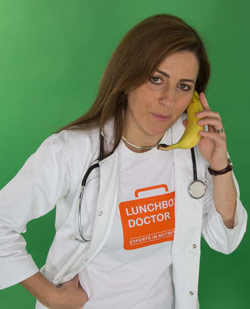|
|
Creating freefrom lunch boxes |
Jenny Tschiesche, nutritionist and founder of The Lunch Box Doctor, gives some tips on how to create safe, nutritionist and appealing school lunch boxes. |

It’s not easy creating tasty but healthy lunchboxes for children at the best of times but it gets even harder when there are foods that may harm or even kill your child if included in their lunch. It’s not only what’s in your child’s lunch to consider either but how you keep your child’s lunch from becoming contaminated too. Firstly, let’s look at the lunchbox from a nutritional standpoint. The main food groups that should be included in a balanced lunchbox are:
So far so good. Now let’s consider what to do if you have a child with a food allergy. The most common food allergies fall into a list of 14 food items. These include: gluten, eggs, dairy, soy, nuts, lupin, celery, peanuts, mustard, molluscs, fish, sesame seeds, crustaceans and sulphur dioxide. What’s left I hear you ask? Well, from my perspective that’s not the question we should be asking. It’s what can we do with the foods that are on the Green For Go List (not “oh look at how many ‘normal’ foods are on the Red For Danger List”). Take the foods that your child can have i.e. the Green For Go List, and let’s get creative: Ingredients
Instructions: Protein: Calcium: Vegetables and Fruit: Drink: Can allergy free lunches be made even easier? Yes, they can!
So, in summary, allergy free lunches do not have to be boring lunches and they can be made even simpler by having a set of guidelines to follow in your head or on a chart on the wall. It might even help to go through the food groups together with your child on a weekly or monthly basis so they can ‘buy-in’ to what foods will be in their lunchbox. That way they feel more involved and are more likely to enjoy their food. February 2017 |

 These tend to be straight forward but you do need to be aware of potential cross contamination. For example vegetable crisps may be produced on the same line as other foods and could be contaminated. Also some fruits outside of the top 14 can be a problem for a child allergic to other foods. You might need to be aware of what’s produced on the same factory line as your child’s seemingly safe product.
These tend to be straight forward but you do need to be aware of potential cross contamination. For example vegetable crisps may be produced on the same line as other foods and could be contaminated. Also some fruits outside of the top 14 can be a problem for a child allergic to other foods. You might need to be aware of what’s produced on the same factory line as your child’s seemingly safe product. 










